Last updated on March 19, 2024
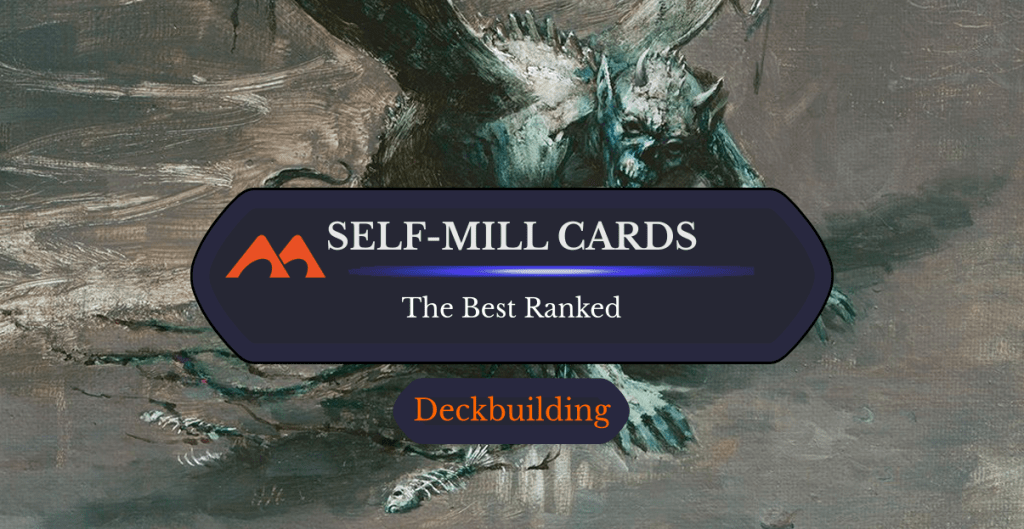
Stinkweed Imp | Illustration by Nils Hamm
Drawing cards is one of the strongest game actions you can take in Magic because it lets you see more cards than your opponent, which gives you more options and resources than them. That’s crucial in a game of resources like Magic.
Another way to see tons of cards is with self-mill strategies. It’s often cheaper to mill yourself for a bunch than draw an equivalent number of cards, and there are plenty of strategies that allow you to convert cards in your graveyard into valuable resources at your disposal. Let’s look at the best self-mill cards!
What Are Self-Mill Cards in MTG?
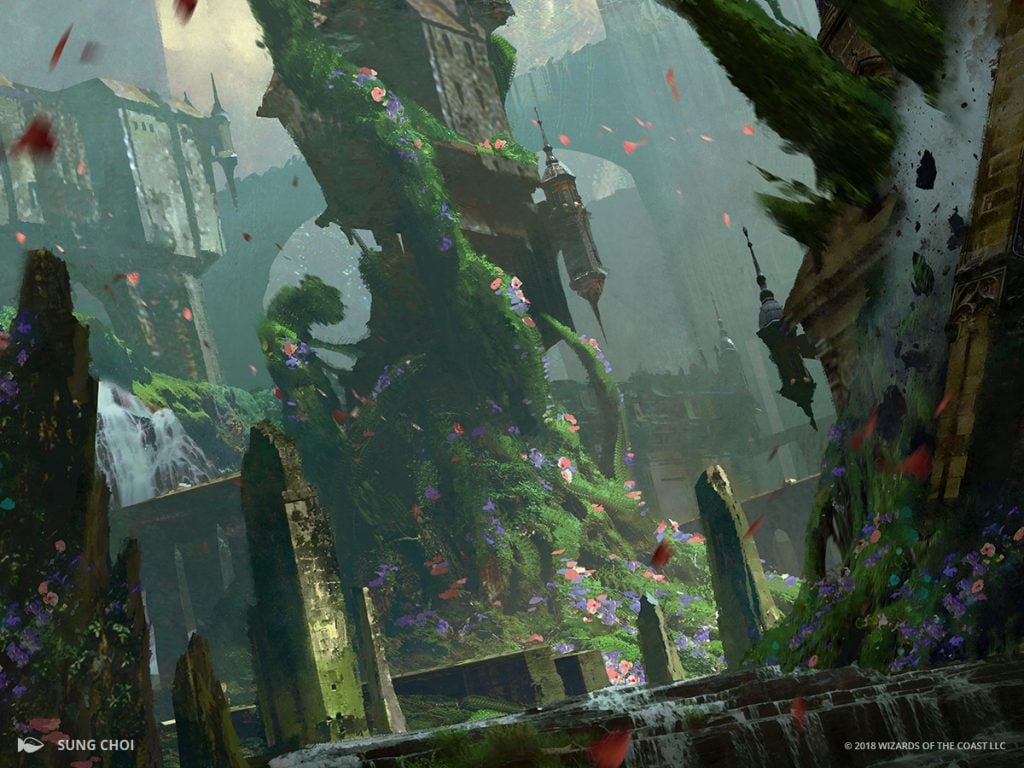
Life from the Loam | Illustration by Sung Choi
Self-mill cards send cards from the top of your library to your graveyard. They’re among the most effective ways of filling your graveyard with cards to fuel various graveyard strategies. Some mechanics like dredge are built around self-mill and filling the graveyard, with others like delve utilizing milled cards.
There was a widespread errata in 2020 for milling, or putting cards from the library into a graveyard. The term “mill” has been around for decades, a reference to Millstone. It was a community nickname, and cards spelled out “put X cards from the library into the graveyard.” With the release of Core Set 2021, mill was adopted as an official rules term.
Self-mill cards come in two varieties: burst and continuous. Burst self-mill cards are effects like Drown in Filth and Mire Triton that mill you once, often with the spell resolving or a creature entering the battlefield. Continuous self-mill cards mill you multiple times over different turns, like Deranged Assistant and Mesmeric Orb.
A balance of burst and continuous self-mill is often best. Continuous cards tend to mill a smaller number but put more cards in the bin than one-off effects. The faster your deck is, the more burst self-mill you need to fuel your strategy.
#35. Mire Triton
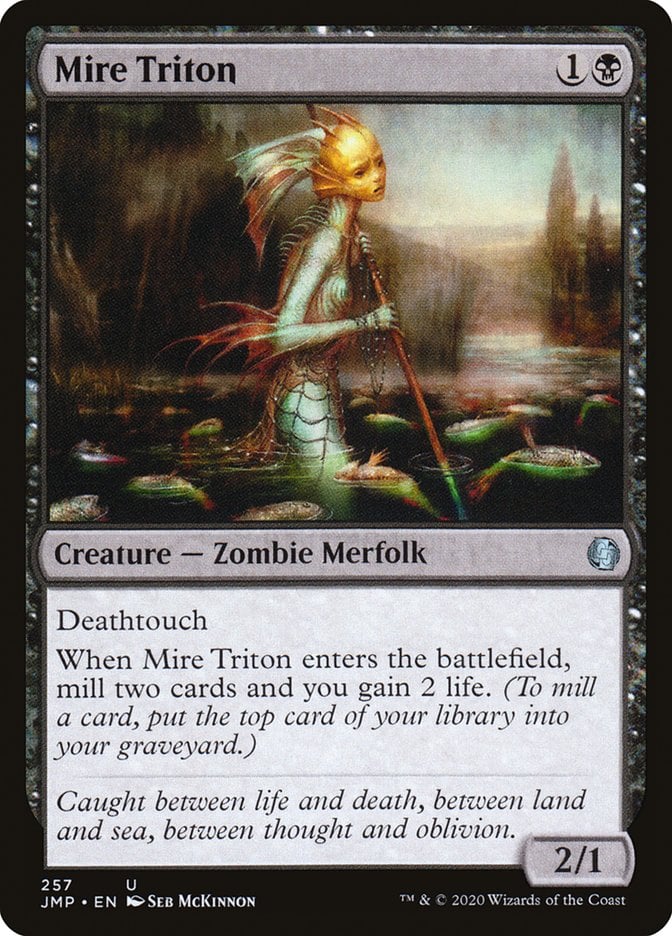
Mire Triton is a perfectly respectable self-mill card. This often fills your graveyard and trades for a large threat, and ETBs are easily reusable with flicker and recursion abilities.
#34. Darkblast
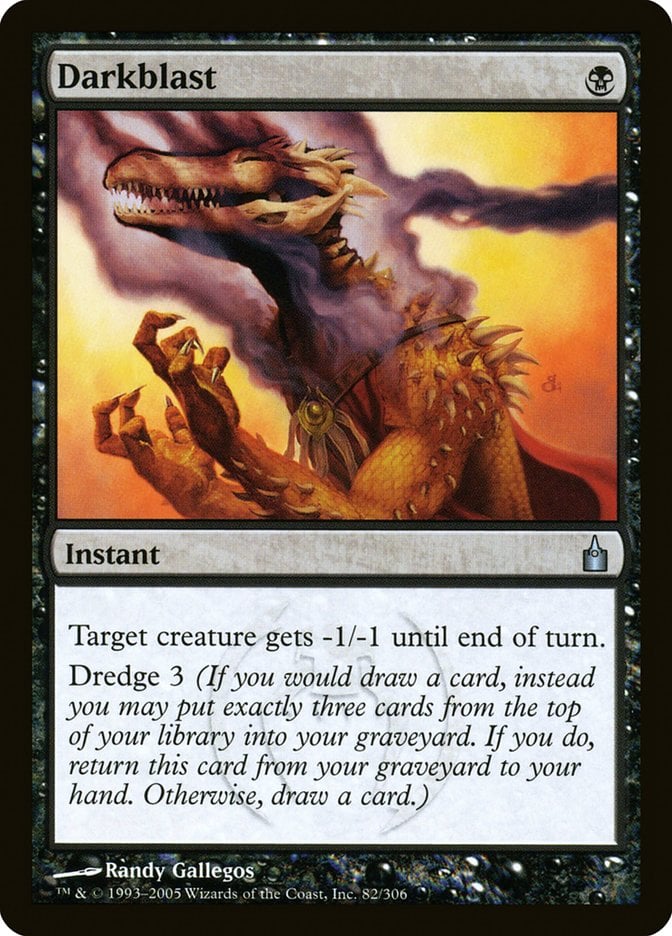
Dredge is one of the most broken mechanics ever put on Magic cards. Darkblast isn’t much of a card but can be a useful interactive piece if minute creatures flood your meta.
#33. Deranged Assistant + Millikin
Deranged Assistant and Millikin are prime examples of continuous self-mill effects that add up over time. The gradual mana advantage pairs nicely with the mill, even if these are relatively ineffective later in the game.
#32. The Everflowing Well / The Myriad Pools
The Everflowing Well offers a lot of potential card advantage; milling two cards is similar to drawing two in the right deck. The Myriad Pools can offer some mana ramp and utility, but you need a lot of permanents in your deck for this to flip.
#31. Corpse Churn
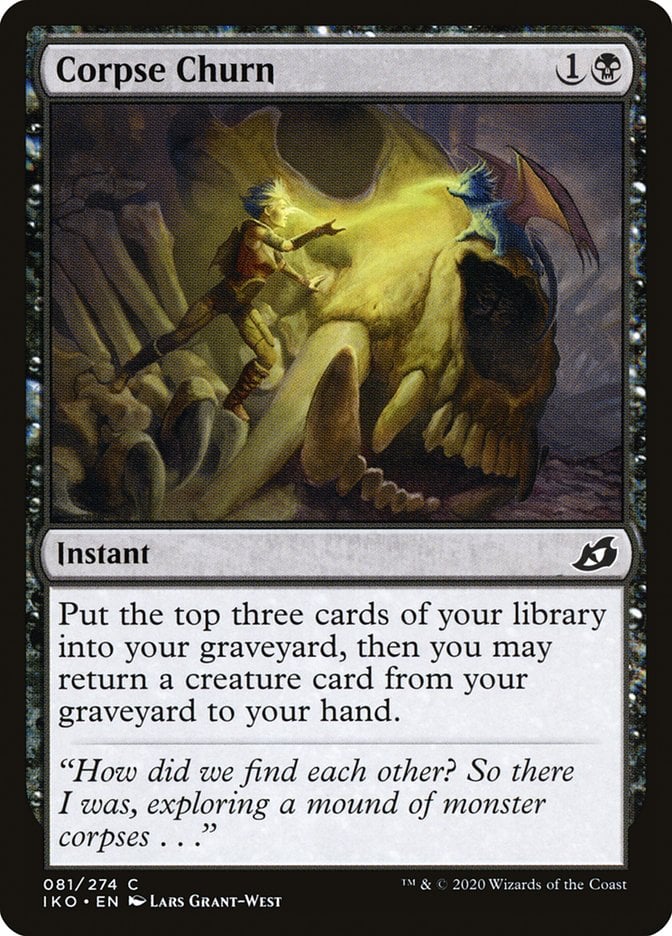
Green tends to do the “mill than return a card” a bit better than black, but Corpse Churn is still a respectable cantrip that tosses some extra cards in the graveyard for your troubles.
#30. Cephalid Vandal
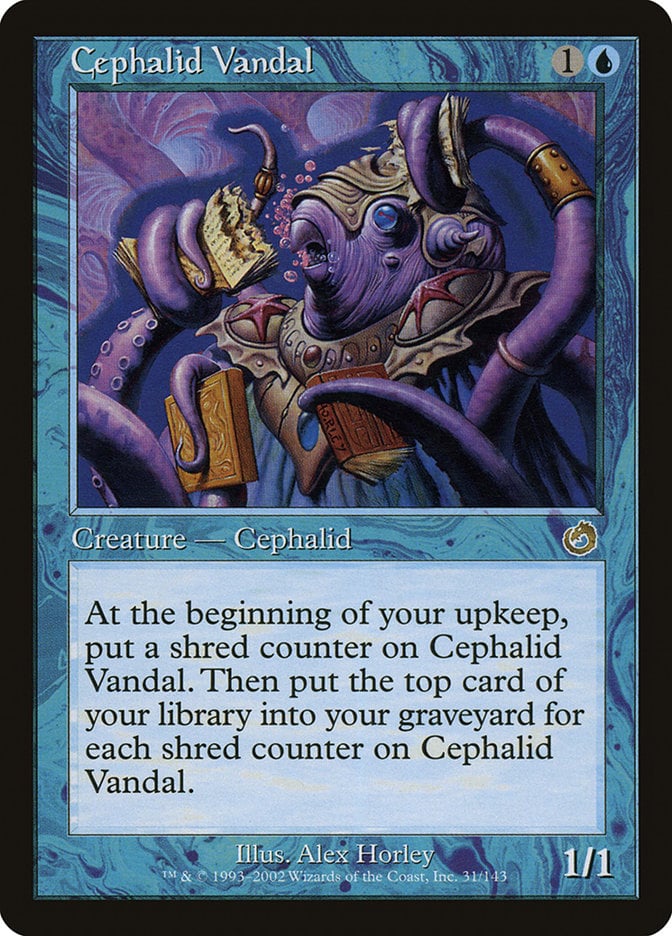
Cephalid Vandal is the epitome of continuous self-mill. While slow, it has the potential to outstrip virtually any other self-mill effect with enough time. It’s just too bad of a topdeck late in the game to be appealing.
#29. Summon Undead
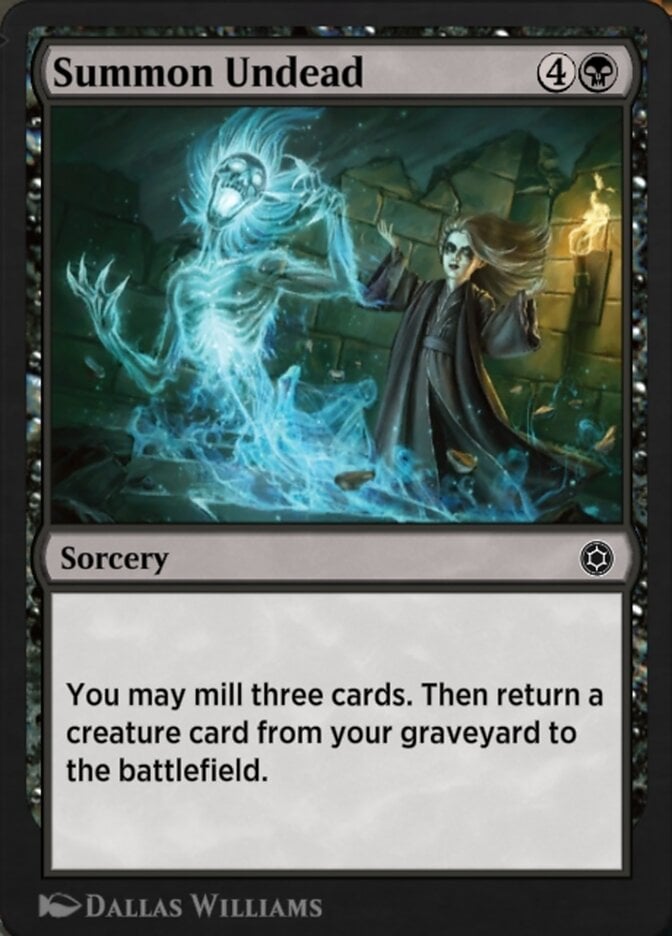
Five mana is a lot for a reanimation spell, but many decks still welcome Summon Undead. A Raise Dead that chucks a few extra cards in the graveyard is just enough value for slower, lower-powered decks.
#28. Druidic Ritual
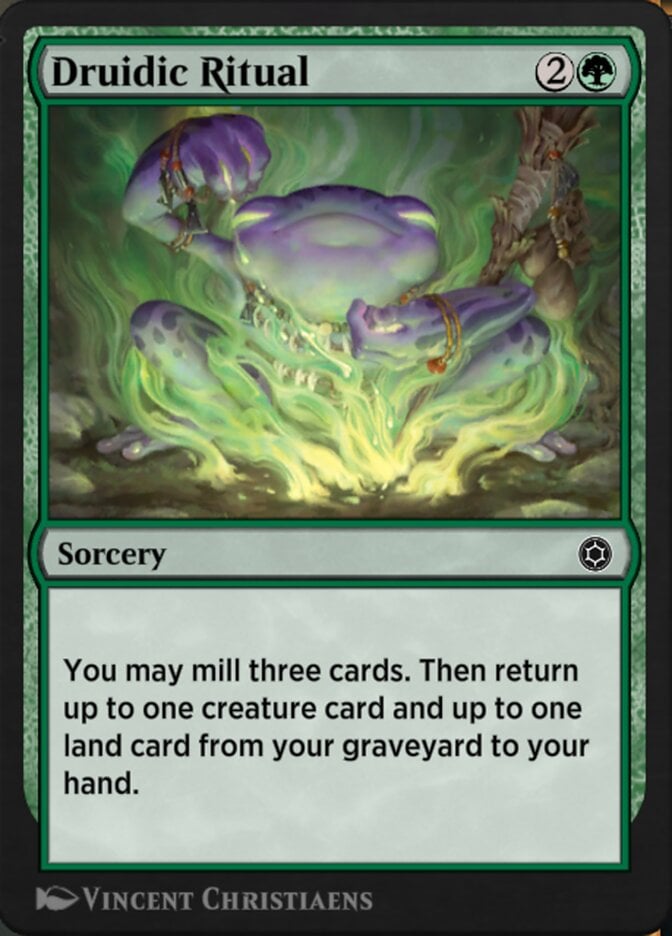
Druidic Ritual is a prime example of a grindy self-mill card. This offers plenty of card advantage for the enterprising self-mill player.
#27. The Mending of Dominaria
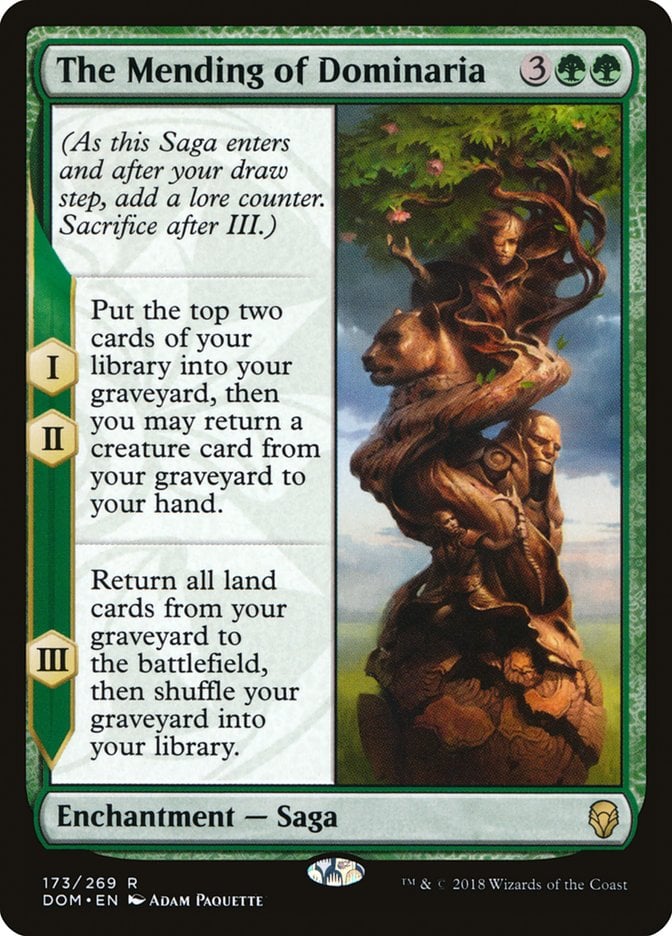
The Mending of Dominaria can be slow but offers an incredible amount of self-mill and ramp for decks willing to wait a few turns. The recent surge of saga support has made this even more appealing.
#26. Drown in Filth
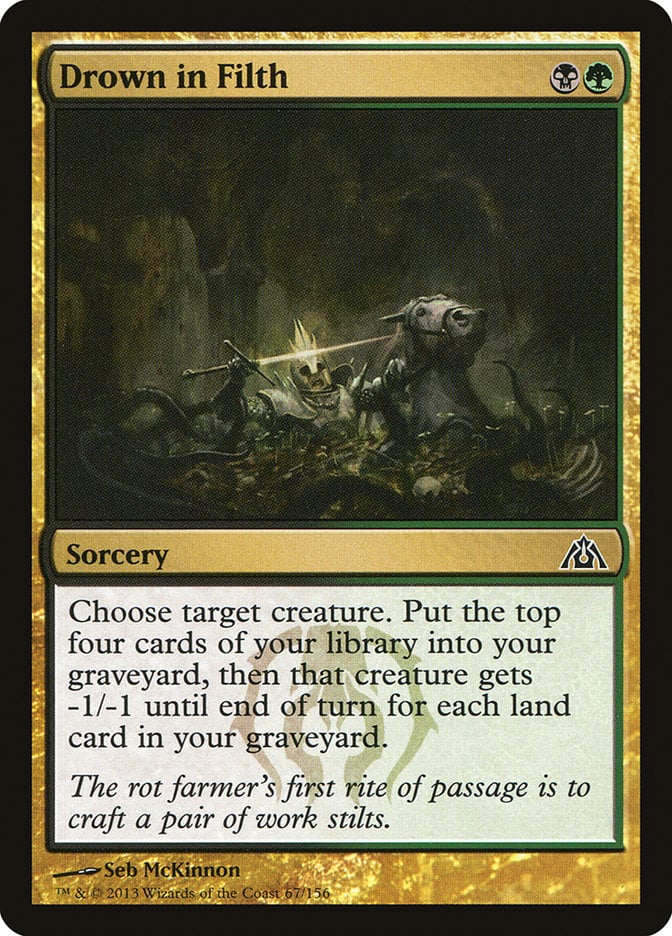
Getting utility from your self-mill cards often leads to a more robust deck. Drown in Filth is a fantastic example of this principle. It fills your graveyard while removing a creature for a handy two-for-one.
#25. Tyvar, Jubilant Brawler
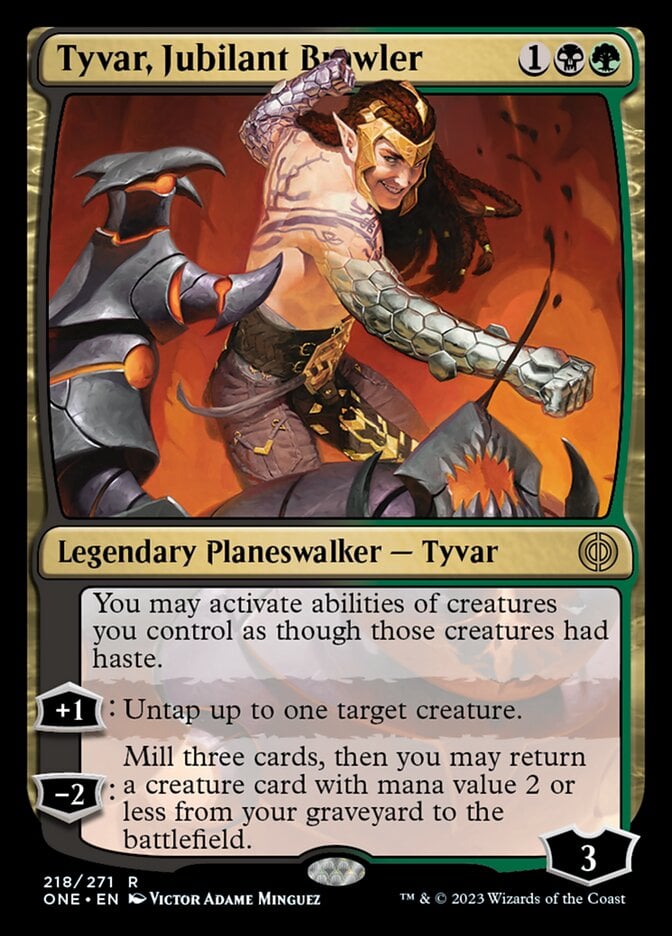
Not only does Tyvar, Jubilant Brawler fill your graveyard, but it also makes immediate use of the milled cards. This is especially potent alongside cards like Hermit Druid and mana dorks whose abilities you want to use instantly.
#24. Bramble Familiar

Bramble Familiar is a fine ramp piece that becomes a self-mill plus reanimation effect later in the game when mana is no longer an issue. It’s also a prominent part of Standard alongside Invasion of Alara.
#23. Wrenn and Realmbreaker
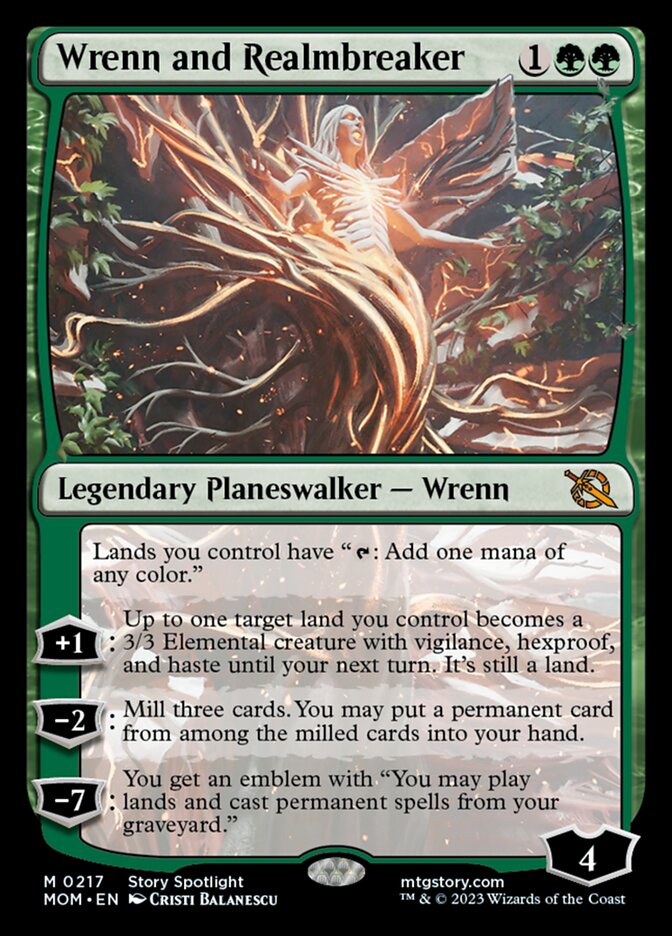
Wrenn and Realmbreaker’s mill ability is what we’re interested in for this article, but the ultimate bears mentioning as well. The emblem is a great payoff for milling your deck, making this planeswalker both an enabler and a reward for self-mill strategies.
#22. Emry, Lurker of the Loch
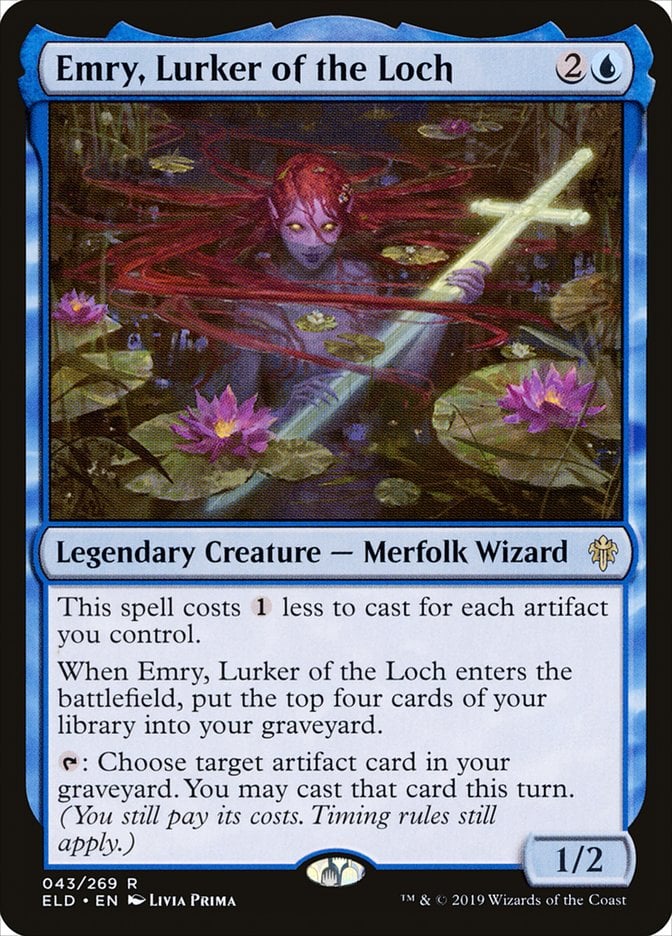
Emry, Lurker of the Loch is an efficient bit of self-mill with recursive potential, but this card requires a high concentration of artifacts, making it one of the narrower options on the list.
#21. Kagha, Shadow Archdruid

Kagha, Shadow Archdruid is a prime example of payoff and enabler. Their two abilities make them a powerful match with fetch lands and fight spells to grind your way ahead of your opponents.
#20. Ertai’s Familiar
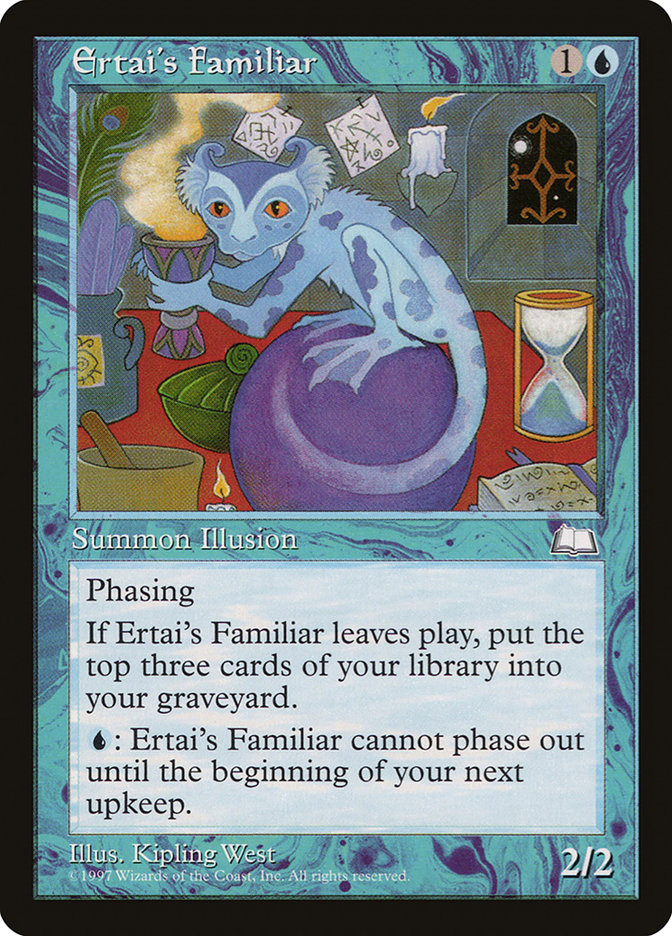
Ertai's Familiar is powerful because of an errata that makes it mill you when it leaves play or phases out. This is a fun little self-mill engine that dumps a few cards in the yard every other turn.
#19. Mental Note + Thought Scour
A key part of Tolarian Terror decks in Pauper, Thought Scour and the less flexible Mental Note chuck three cards in the yard for a single mana while replacing themselves. These aren’t the flashiest self-mill spells, but certainly efficient.
#18. Angel of Suffering
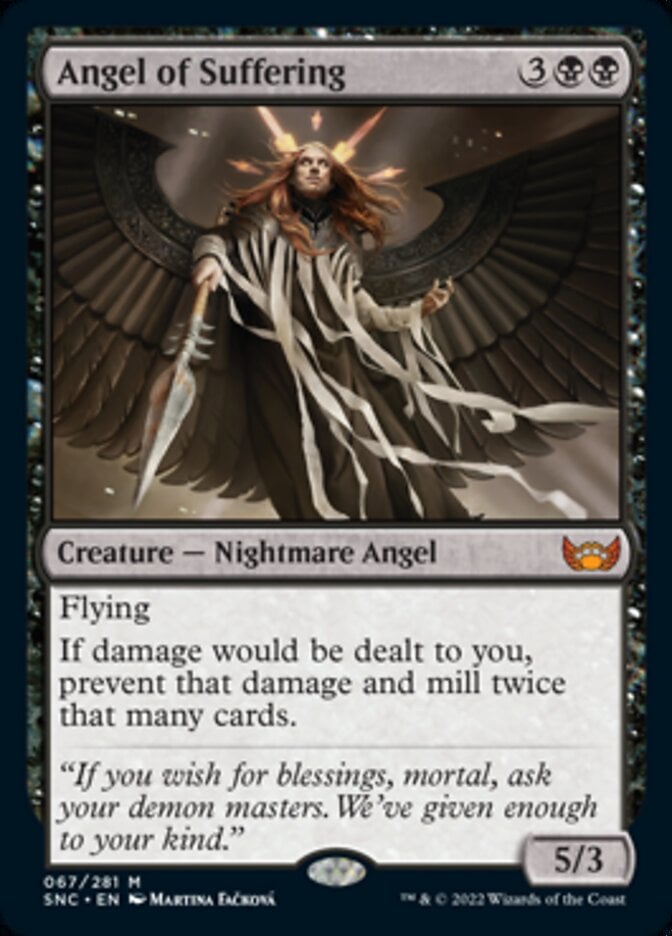
Angel of Suffering is one of the more creative self-mill cards that can dissuade opponents from attacking you. Consider pairing it with cards like Ankh of Mishra and Ashes to Ashes.
#17. Incarnation Technique

Incarnation Technique is a reanimation spell worth 5 mana since you reanimate two creatures and put 10 cards in the bin. The trick is to demonstrate it with a player who can offer you something good in return or in colors that suggest they won’t have many creatures.
#16. Liliana, Death’s Majesty
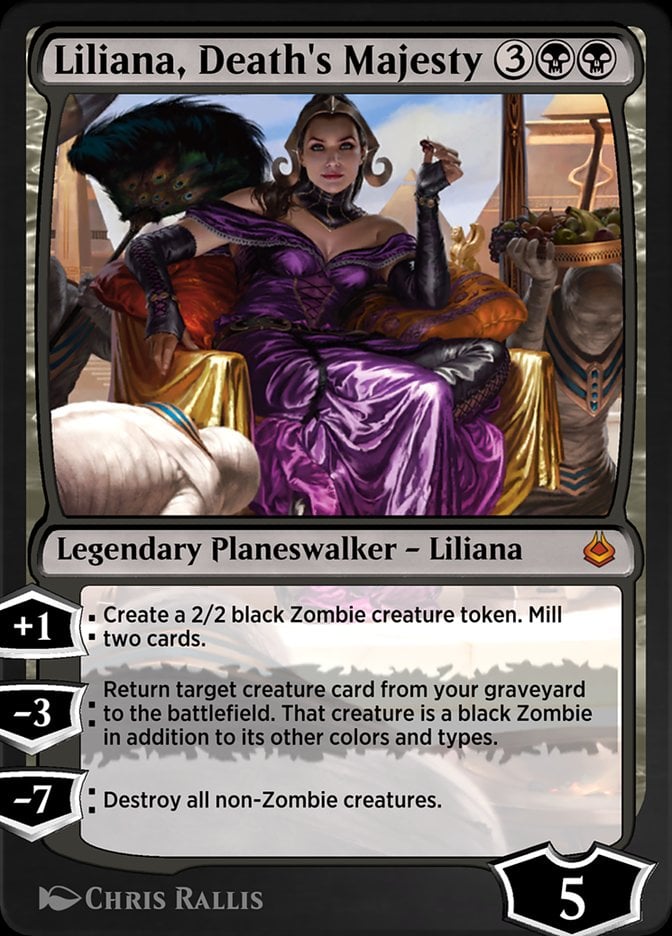
Liliana, Death's Majesty offers all the versatility you could want. You get to build your board presence while milling, reap the rewards of milled cards, and build toward a one-sided board wipe that often leads to quick wins.
#15. Breach the Multiverse

Breach the Multiverse wins games. Getting four threats while milling 10 cards from each player is more than enough value for a mere 7 mana.
#14. Tasigur, the Golden Fang
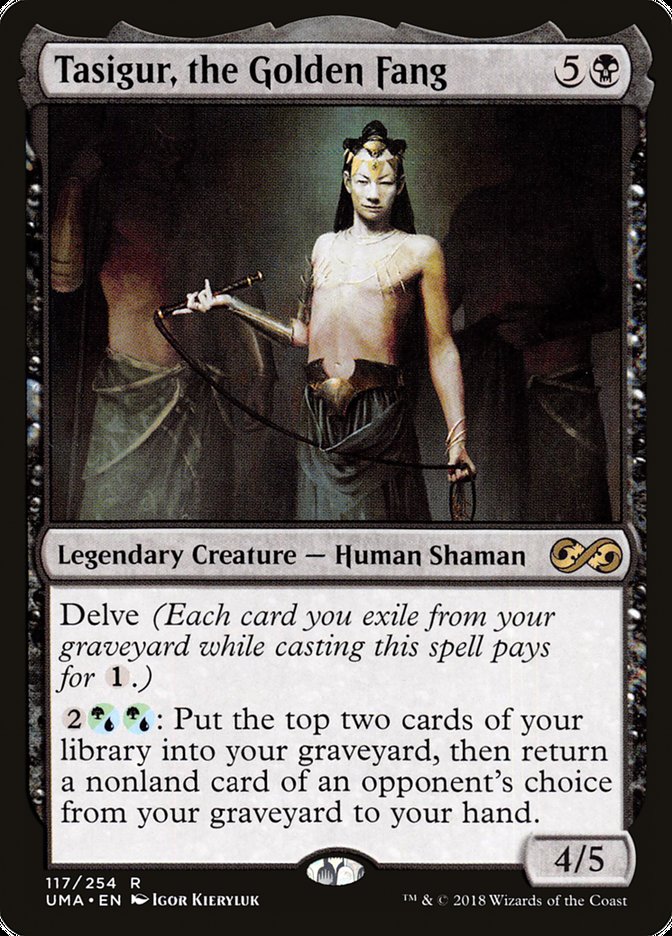
Tasigur, the Golden Fang makes a fantastic commander since delve pays for commander tax, but it’s also a solid self-mill engine. The activated ability ensures you draw cards while filling your graveyard. The trick is to be selective about what you exile with the delve cost to increase the odds of getting the card you want.
#13. Blossoming Tortoise
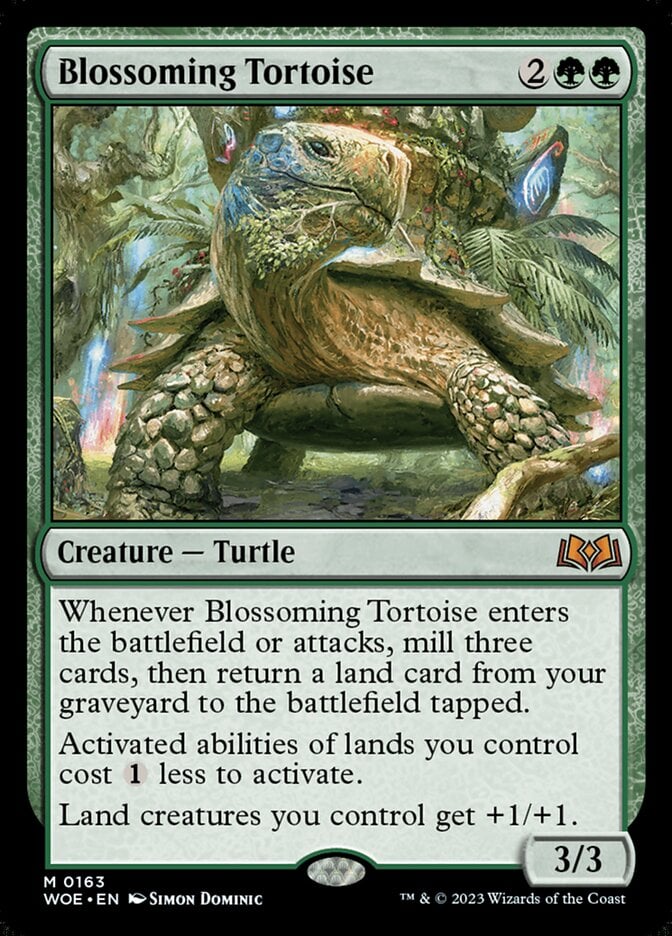
Blossoming Tortoise plays well with lands that have activated abilities, but that’s far from necessary to make this card good. The combination of steady ramp and self-mill makes this a reasonable mid-game threat.
#12. Witherbloom Command

Witherbloom Command is one of the weaker Commands overall, but it’s useful for self-mill decks in two ways: It fills your graveyard and hits common pieces of graveyard hate, like Rest in Peace and Grafdigger's Cage.
#11. Skull Prophet
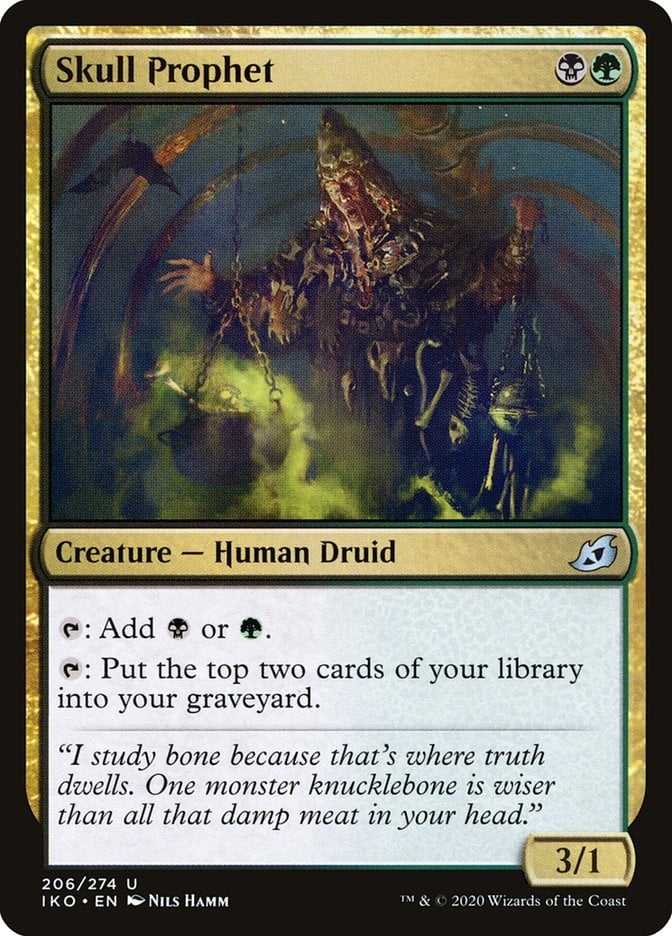
I might like Skull Prophet more than the card deserves, but I’m a sucker for any early-game accelerant that provides additional value when you no longer need the mana. Getting two cards each turn is reasonable enough for a steady source of card advantage.
#10. Stitcher’s Supplier

Stitcher's Supplier is among the most efficient self-mill cards available. Milling six for a single black mana is a fantastic deal. Between cards like Skullclamp and sacrifice outlets, it’s easy to get the full value off this little zombie.
#9. Cephalid Illusionist
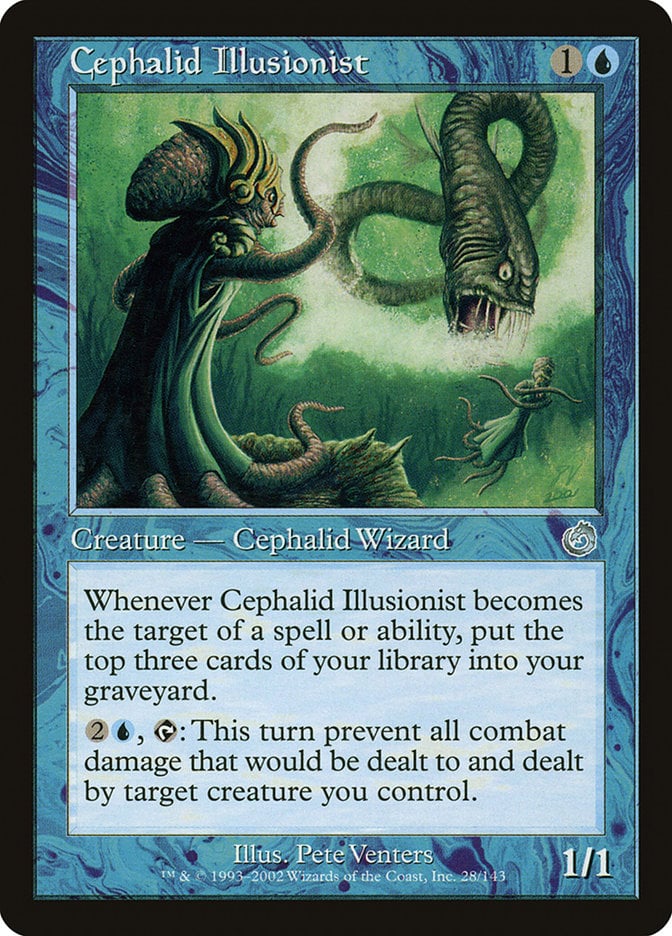
The namesake card of Cephalid Breakfast in Legacy, Cephalid Illusionist is often paired with Shuko or Nomads en-Kor to mill your entire deck in one go and set up cards like Thassa's Oracle for a sneaky win.
#8. Stinkweed Imp

Stinkweed Imp is a powerful dredge card often seen in older formats. It’s great with Tortured Existence in Pauper and just puts so many cards in your graveyard for 0 mana.
#7. Takenuma, Abandoned Mire
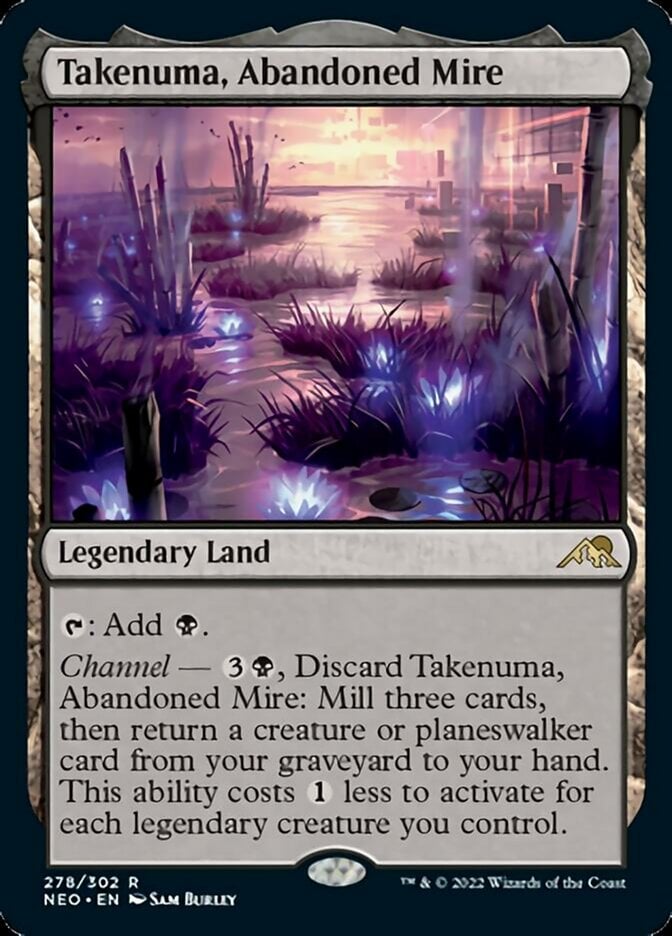
All of the channel lands from Neon Dynasty are playable, but Takenuma, Abandoned Mire is especially useful at fueling other strategies and grinding in long games.
#6. Golgari Grave-Troll

Banned in Modern (twice!) and restricted in Vintage, Golgari Grave-Troll is one of the most heinous Magic cards ever printed. That’s it, that’s the review.
#5. Life from the Loam

Life from the Loam doesn’t mill as many cards as its contemporaries but offers the greatest value beyond the graveyard. Getting back fetch lands is always nice, but there are plenty of other lands that send themselves to the graveyard for value, like Strip Mine, Wasteland, and the aforementioned channel lands.
#4. Brain Freeze
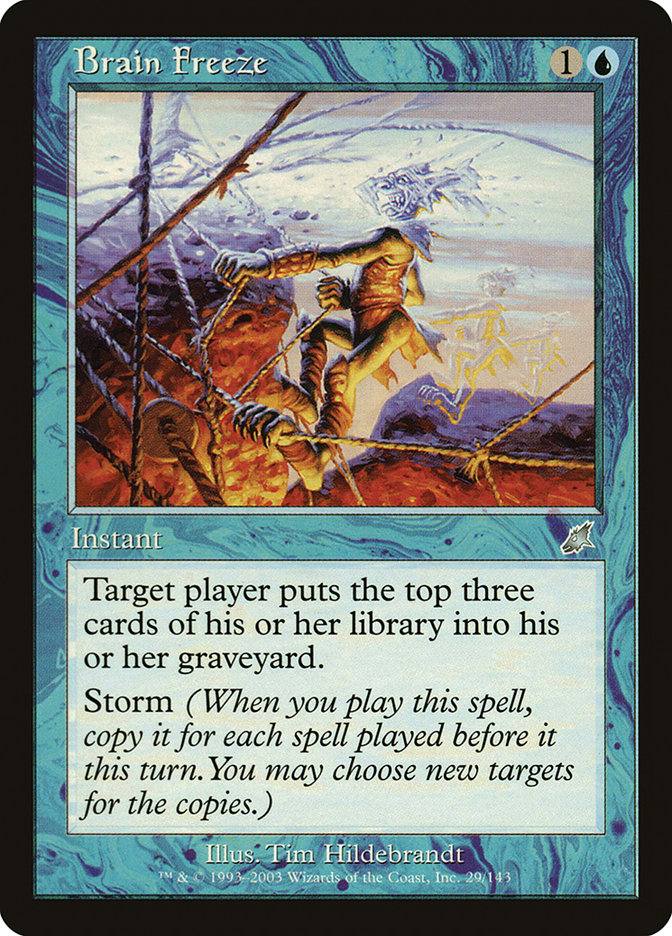
Commonly seen alongside Lion's Eye Diamond and Underworld Breach for an instant win, Brain Freeze’s utility extends much further. You only need one or two copies for this to be highly efficient, but the ceiling is often much higher.
#3. Court of Cunning
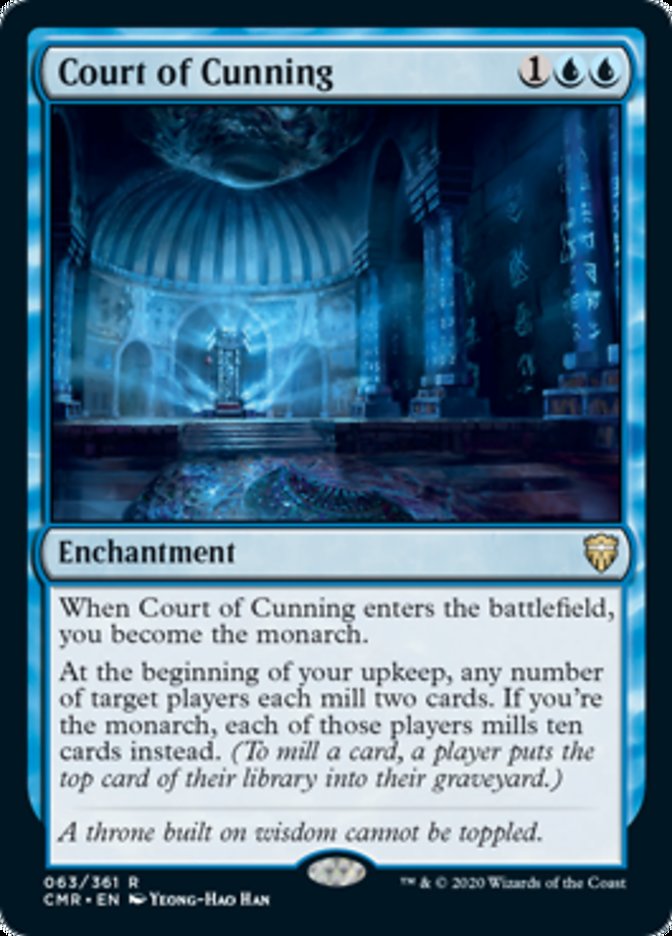
Court of Cunning provides two sources of card advantage. The self-mill is fantastic, as is the monarchy. Defending the monarchy is often easy for self-mill decks, which tend to have plenty of small creatures.
#2. Mesmeric Orb
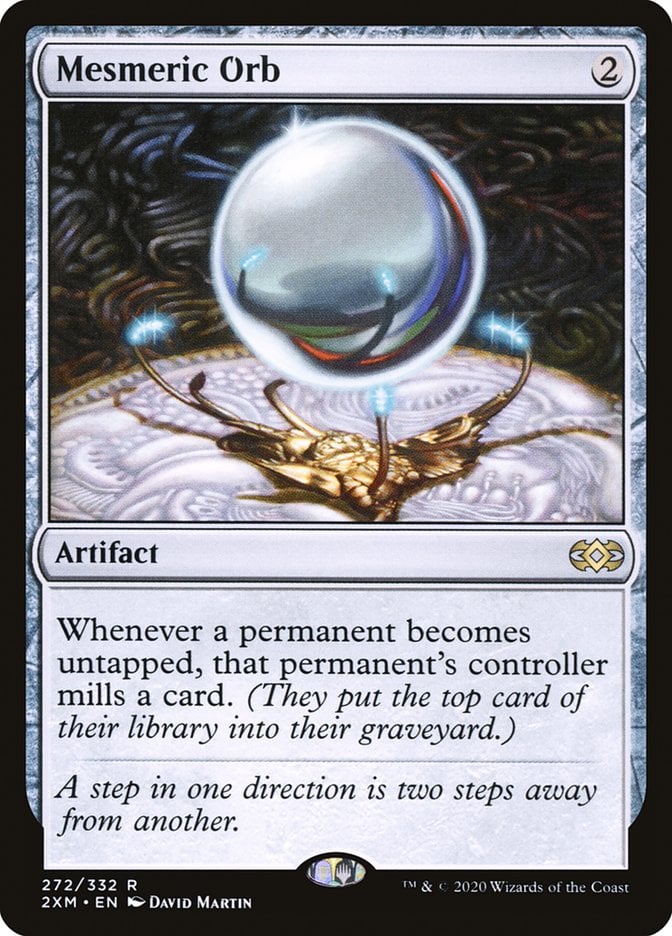
You typically see Mesmeric Orb in decks attempting to mill their opponents, but self-mill decks get in on the value. The more lands you play, the more cards this spell mills. It’s almost unmatched in efficiency.
#1. Hermit Druid

Hermit Druid is a fundamentally unfair card. You’ll often play it in decks with zero basic lands, so you mill your entire library with one activation to set up Thassa's Oracle. Even with basics, it mills tons of cards for the lowest mana cost possible, and you can do it every turn.
Best Self-Mill Payoffs
There are a few prominent payoffs for self-mill. Recursive effects use the graveyard as a resource, but there are plenty of combo outlets and ways to turn your graveyard into additional value.
Delve cards are among the simplest payoffs. You’ll use all the cards in your bin to cast cards like Tasigur, the Golden Fang and Dig Through Time for next to no mana. Escape cards like From the Catacombs and Uro, Titan of Nature's Wrath similarly use the graveyard.
There are also plenty of effects that care about the number of cards in or going to your graveyard. Muldrotha, the Gravetide, and The Gitrog Monster both benefit from a steady stream of cards going to your graveyard. Izoni, Thousand-Eyed and Grist, the Hunger Tide both turn excessive numbers of creatures into tangible win conditions.
Finally, you can combo off with self-mill. A couple of prominent cards allow you to win with an empty library. Thassa's Oracle is the most infamous, but Laboratory Maniac and Jace, Wielder of Mysteries also benefit from effects milling your library.
How Does Self-Mill Win?
There are a few ways for self-mill decks to win. The most important aspect is to ensure your win condition needs cards in the graveyard. For example, blue decks in Pauper use Thought Scour and Mental Note to power out Tolarian Terror and Cryptic Serpent, while Dredge decks use cards like Prized Amalgam and Vengevine to flood the board with creatures from the graveyard.
Self-mill decks can also focus on combos. One way to do this is to empty your entire library into your graveyard with something like Hermit Druid or Brain Freeze, then return a card like Thassa's Oracle or Laboratory Maniac with any number of reanimation effects.
These are two vividly different examples of how self-mill wins, both by using the graveyard as a resource. Not every deck does this, but when you do, it’s often among the strongest and least fair resources in the game.
Tips for Playing Self-Mill
Firstly, make sure you have a plan for graveyard interaction; you need to ensure your deck doesn’t fold to Rest in Peace.
Be prepared for a long game. Self-mill decks often utilize a lot of recursive elements, like Druidic Ritual and Baloth Null, that allow them to out-grind other decks. There are exceptions, like Dredge or Underworld Breach decks, but self-mill decks tend to grind.
Ensure you have enough of the right cards! This tip is more for deckbuilding than gameplay, but it's essential. If your self-mill deck has a commander like Izoni, Thousand-Eyed that cares about a specific card type, you need to bias your deck towards that card type. One of the easiest ways to fumble a self-mill deck like this is to have too many off-type cards, filling your graveyard with duds.
What Beats a Self-Mill Deck?
Graveyard hate demolishes self-mill decks all the time. If you’re playing a self-mill deck, it’s important to plan ahead for some common graveyard interactive spells that can ruin your day. These cards are often artifacts and enchantments, so ways to deal with those permanent types are vital.
The best tools against a self-mill deck are effects that exile cards instead of sending them to the graveyard. Rest in Peace, Dauthi Voidwalker, and Leyline of the Void are a few prominent examples of this effect. These cards all use replacement effects, so your cards never hit the graveyard; in addition to losing the resource of your graveyard, you won’t even get triggers from payoffs like The Gitrog Monster. Some useful interactive spells to handle these effects include Witherbloom Command, Tear Asunder, and Assassin's Trophy.
Cards that exile your graveyard once, like Relic of Progenitus or Tormod's Crypt, can be problematic. Killing them is useful, but another strategy is to be patient. Rather like how you can try to bait out a board wipe by applying enough pressure that your opponent has to cast it without playing all your creatures, a bit of self-mill can prompt your opponent to crack these before they want to. Just be patient.
Finally, there are some precise graveyard hate spells, cards like Faerie Macabre or Graveyard Trespasser. These can be annoying, but since many self-mill decks go for quantity, they aren’t nearly as devastating as cards that eat your entire graveyard.
Wrap Up
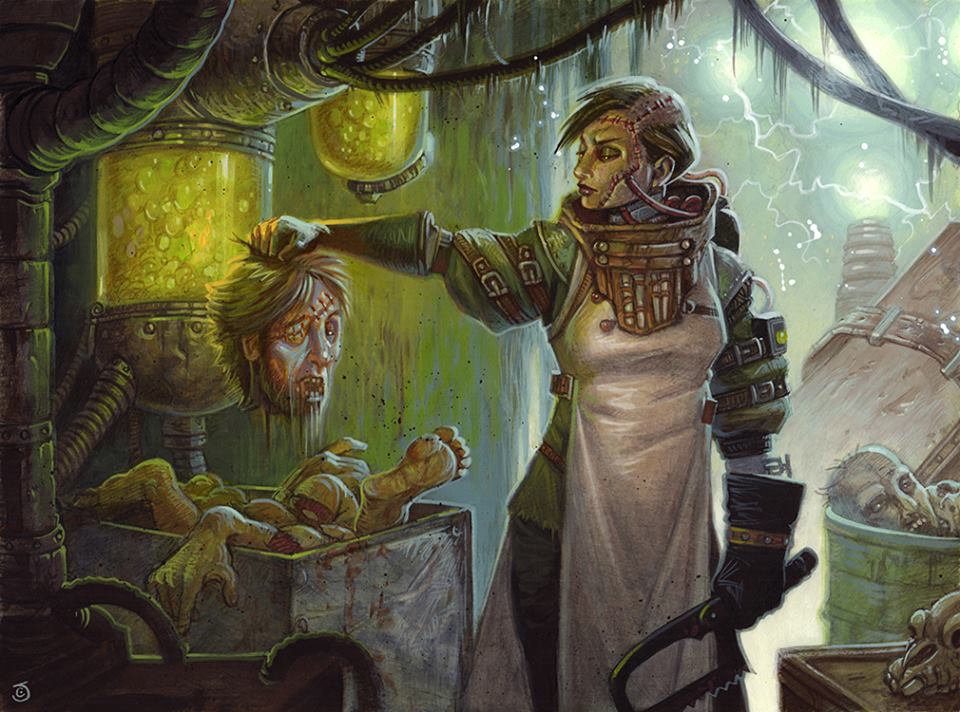
Stitcher's Supplier | Illustration by Chris Seaman
Many of Magic’s most busted decks utilize the graveyard as a resource. From combo decks finishing with Thassa's Oracle to grindy, resilient decks dominating long games, the graveyard does a bit of everything. But all those strategies require ample fuel to get started, making these self-mill cards an essential piece of the strategy.
What’s your favorite self-mill deck? Do you like grindy decks or fast combo lists? Let me know in the comments or in the Draftsim Discord!
Stay safe, and keep milling!
Follow Draftsim for awesome articles and set updates:
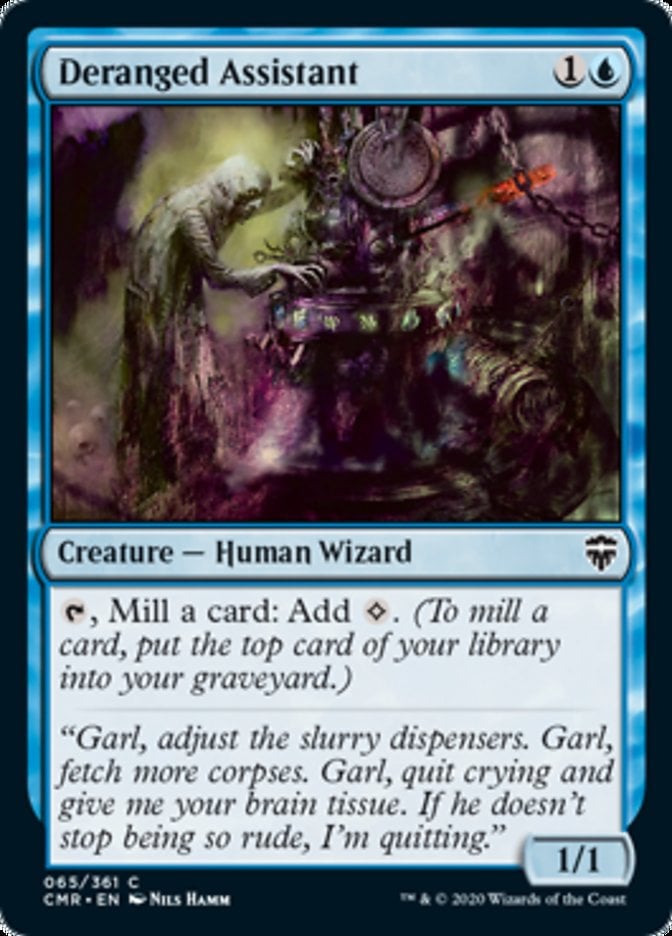





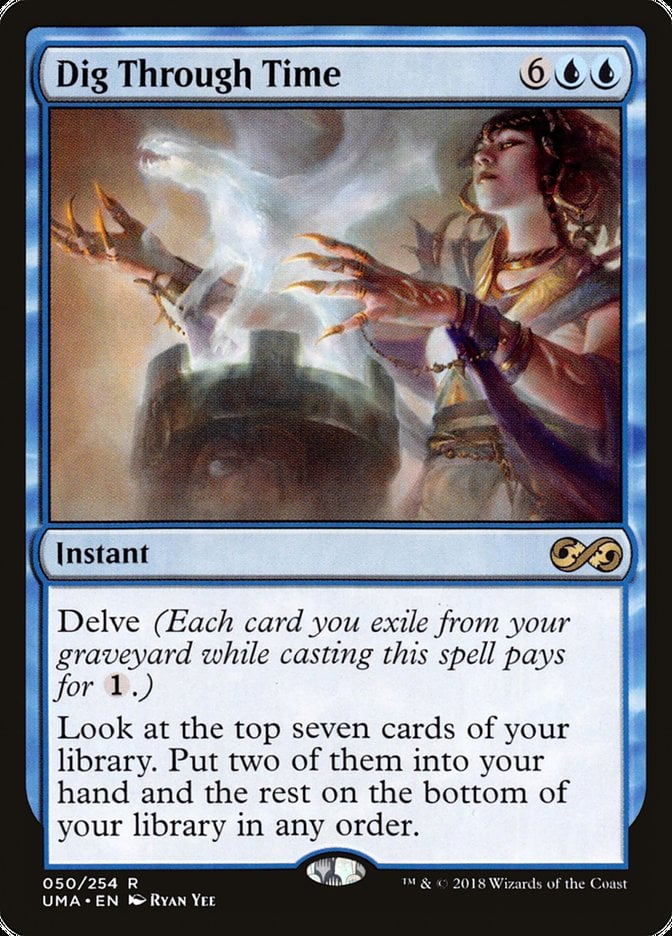
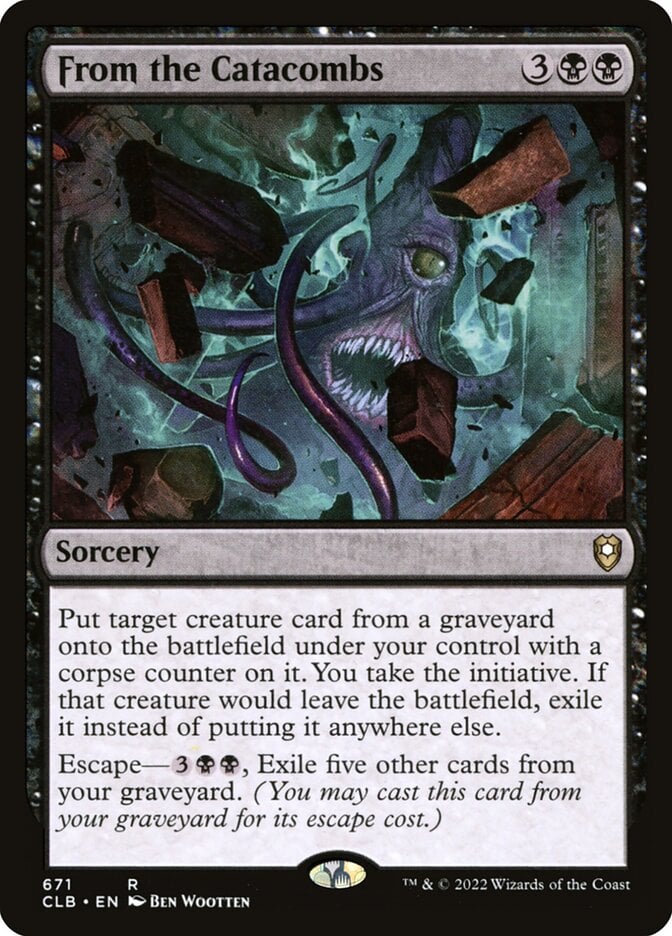
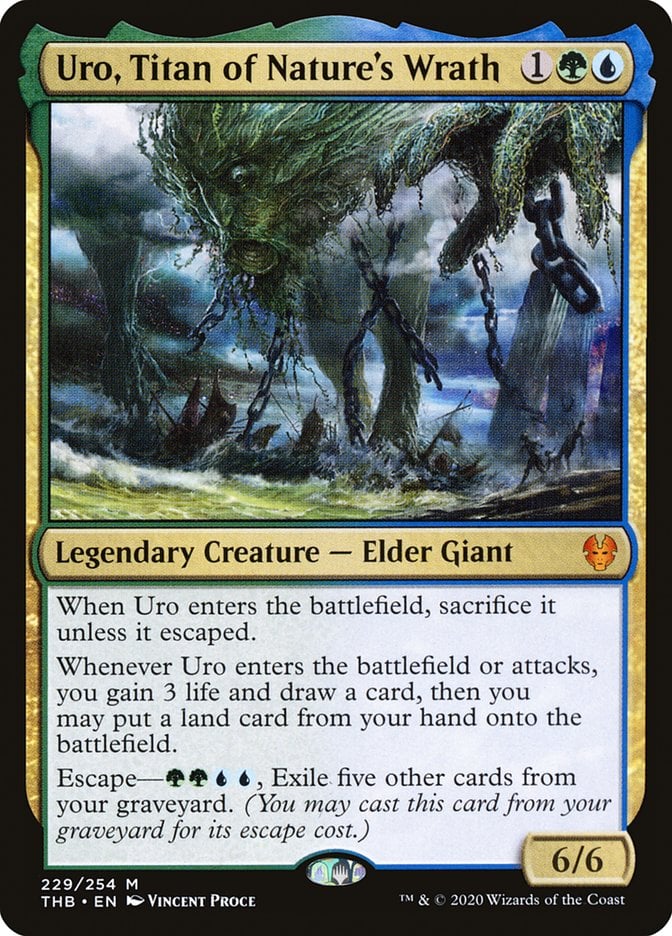
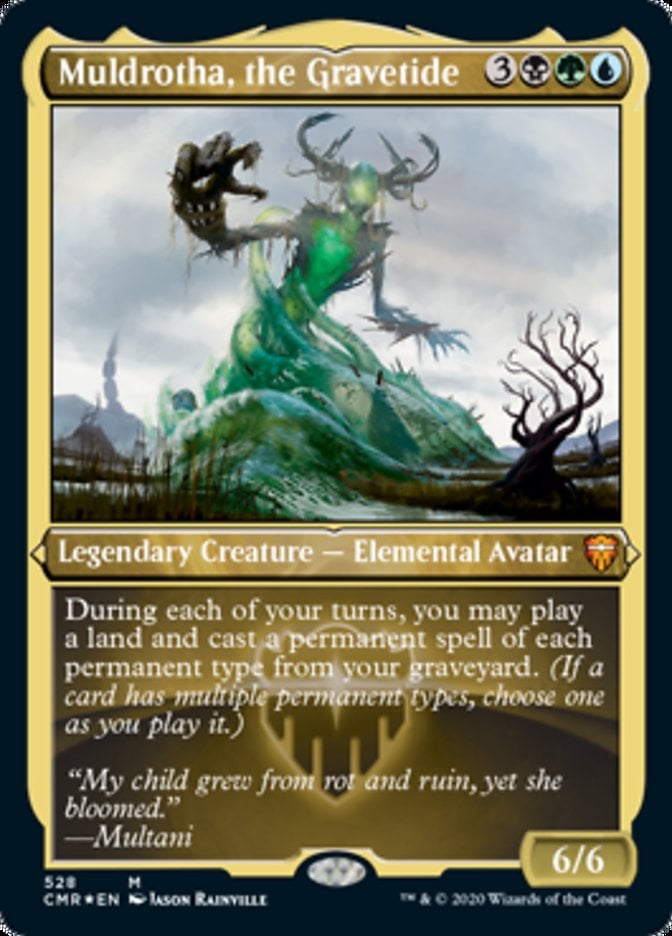
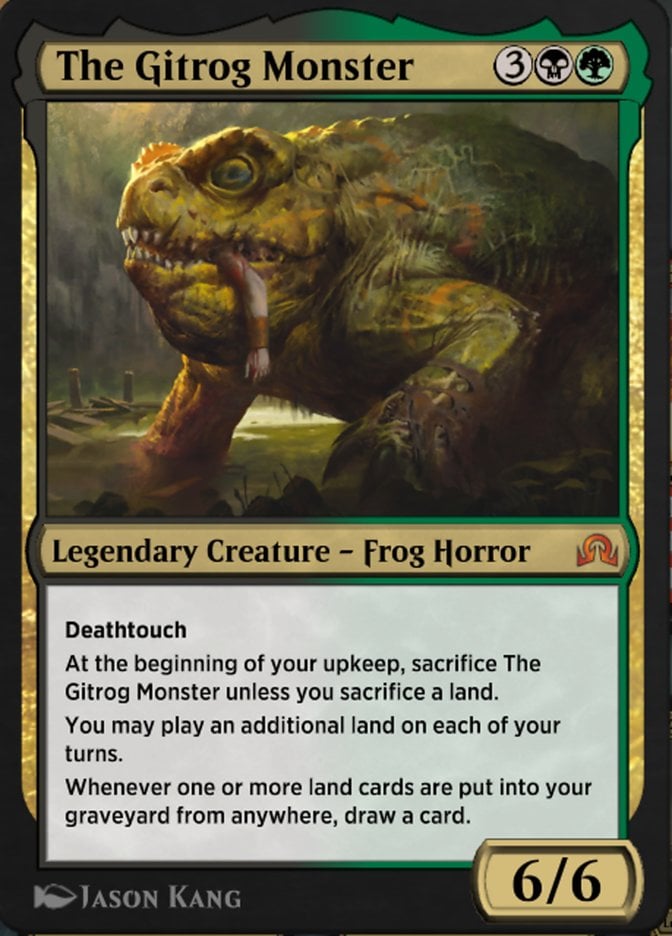

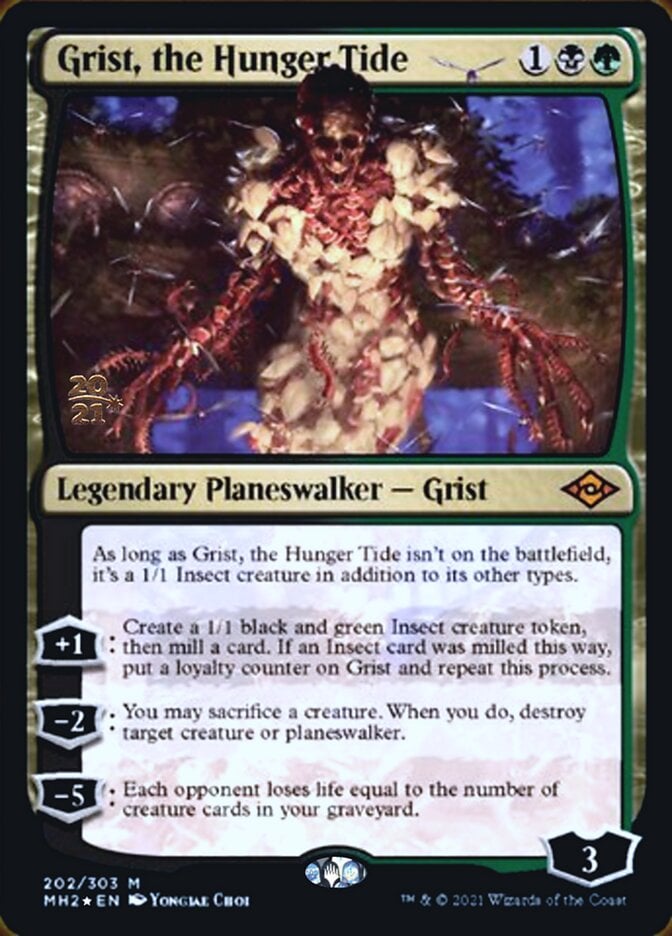
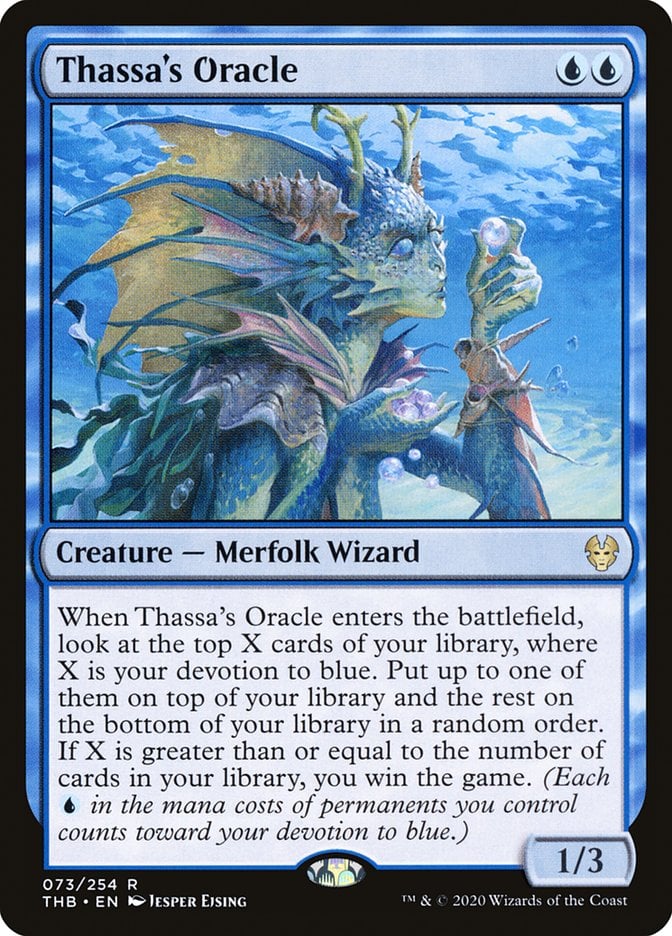
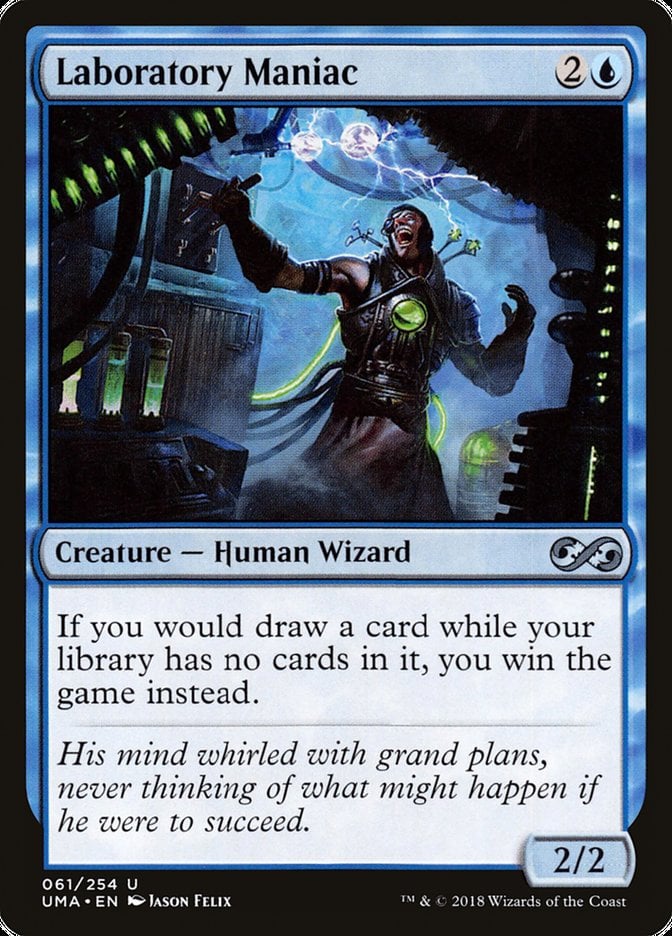
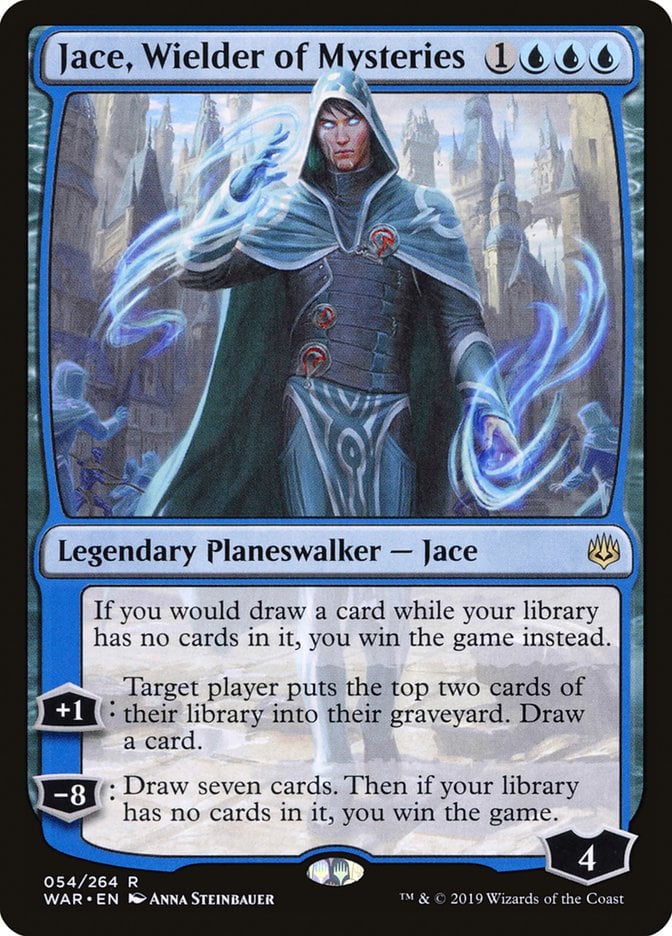
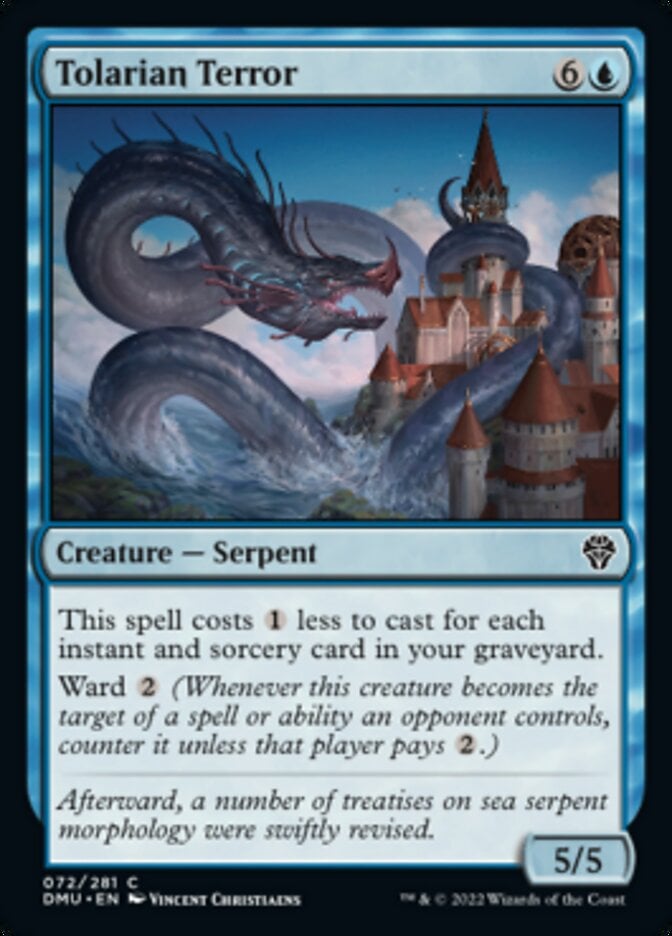
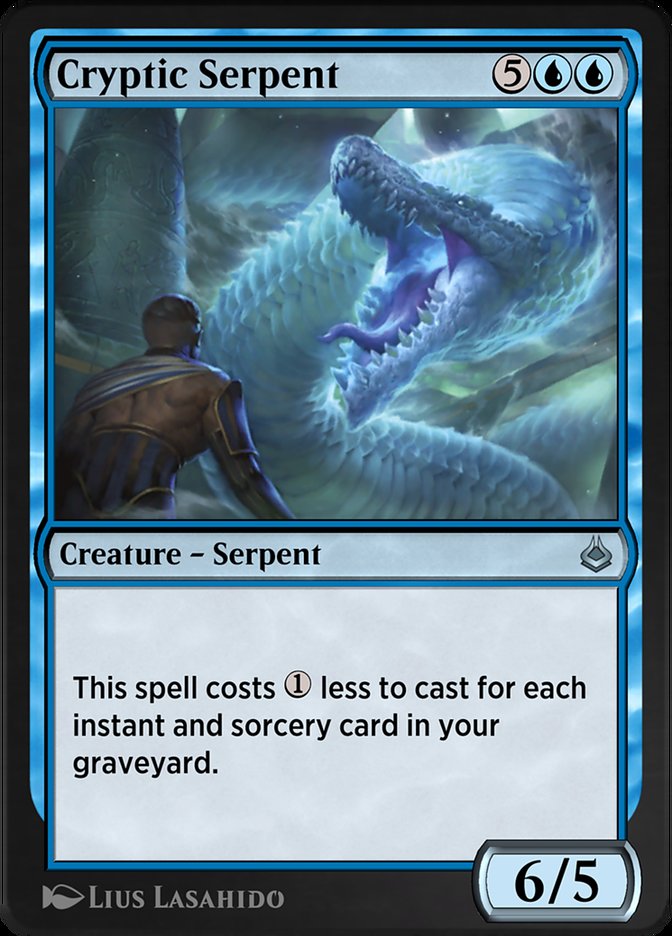
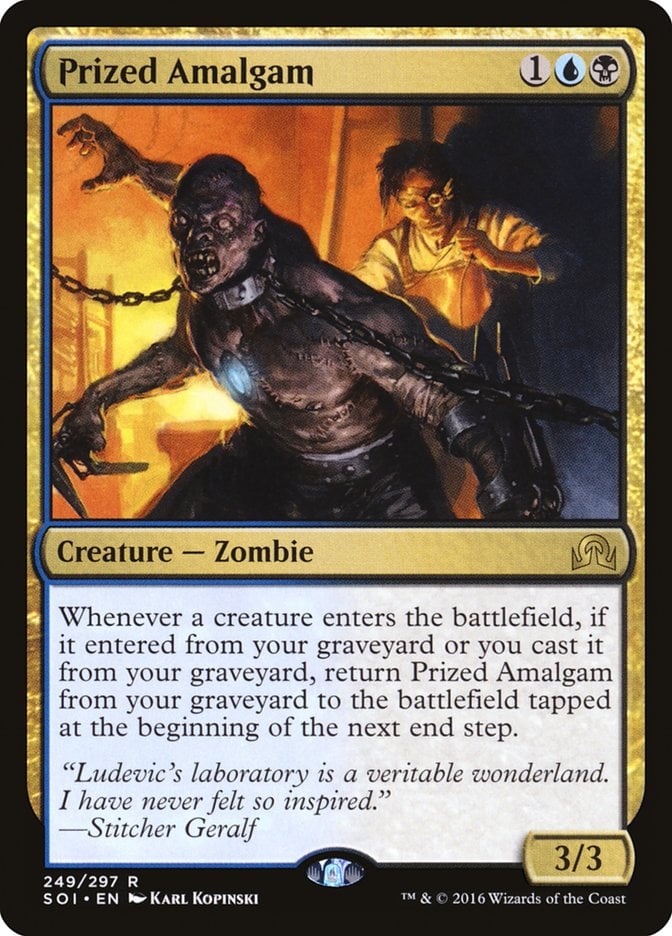
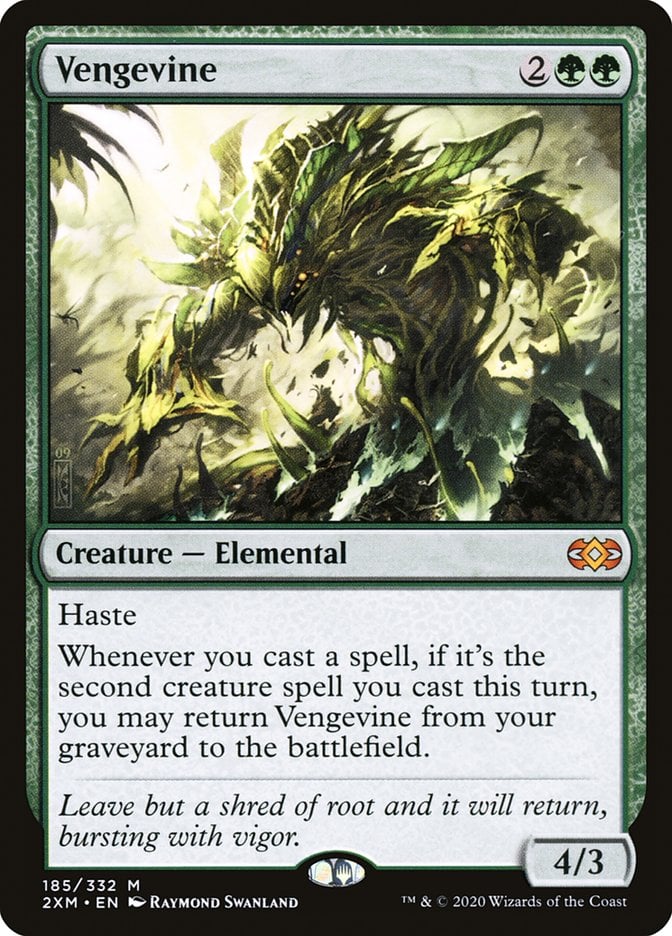
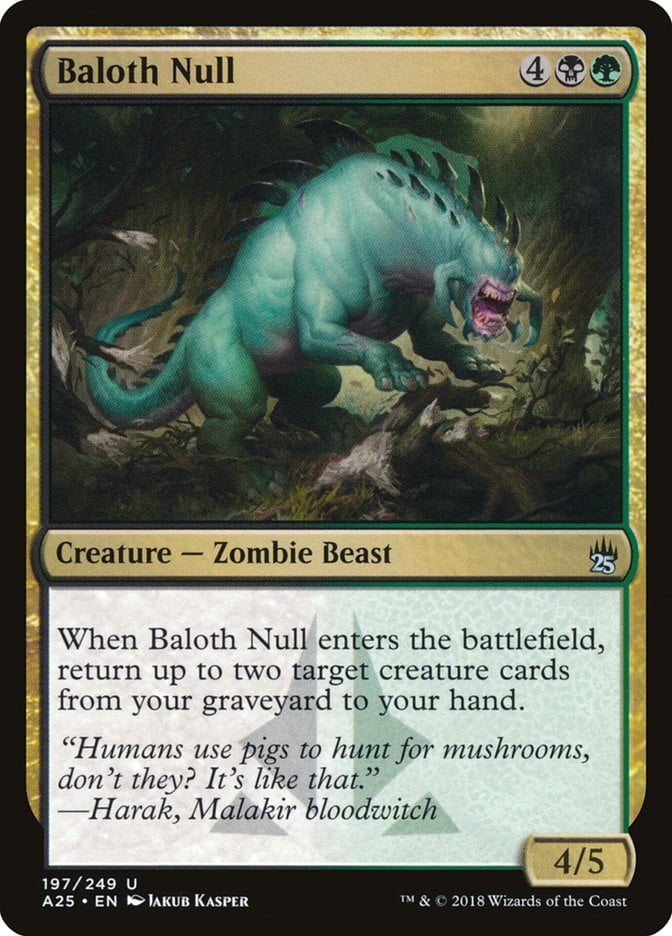

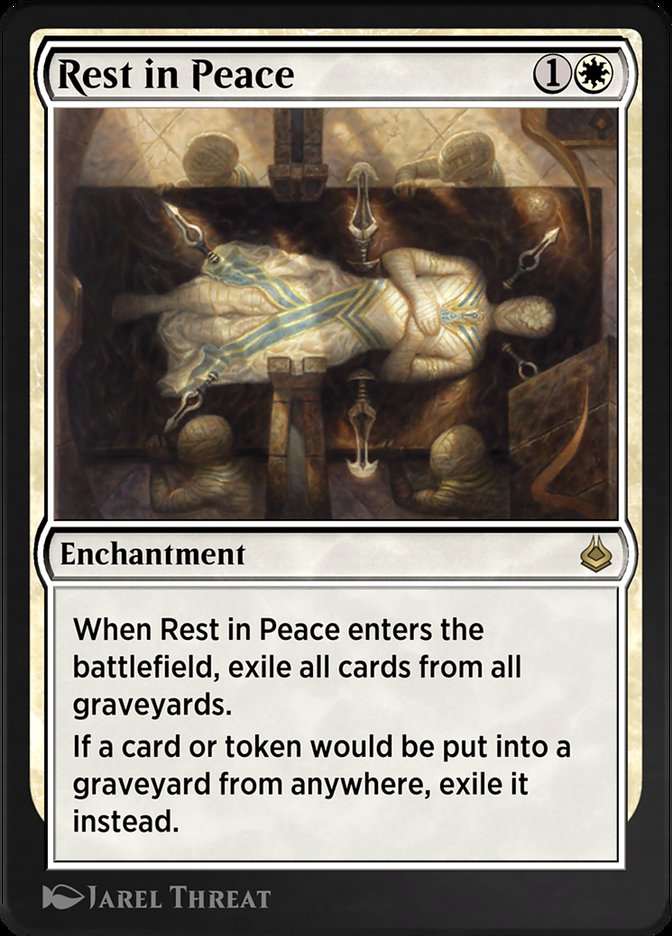
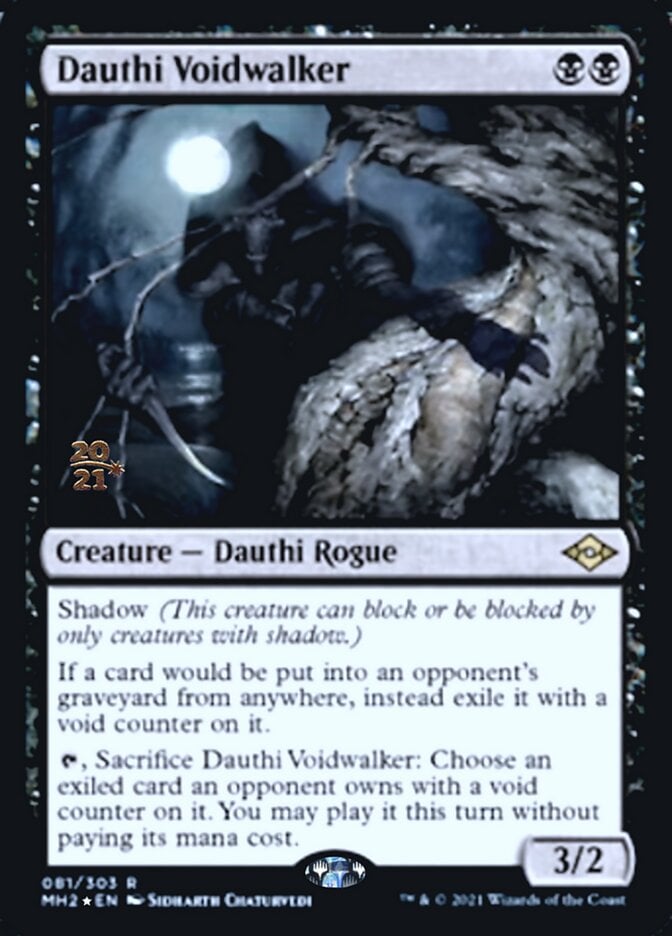
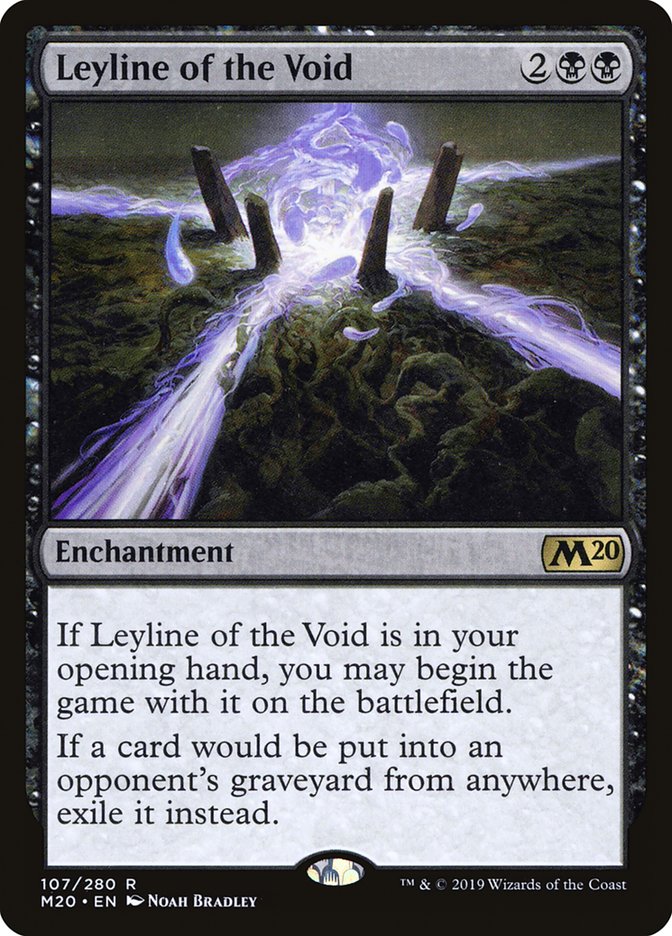
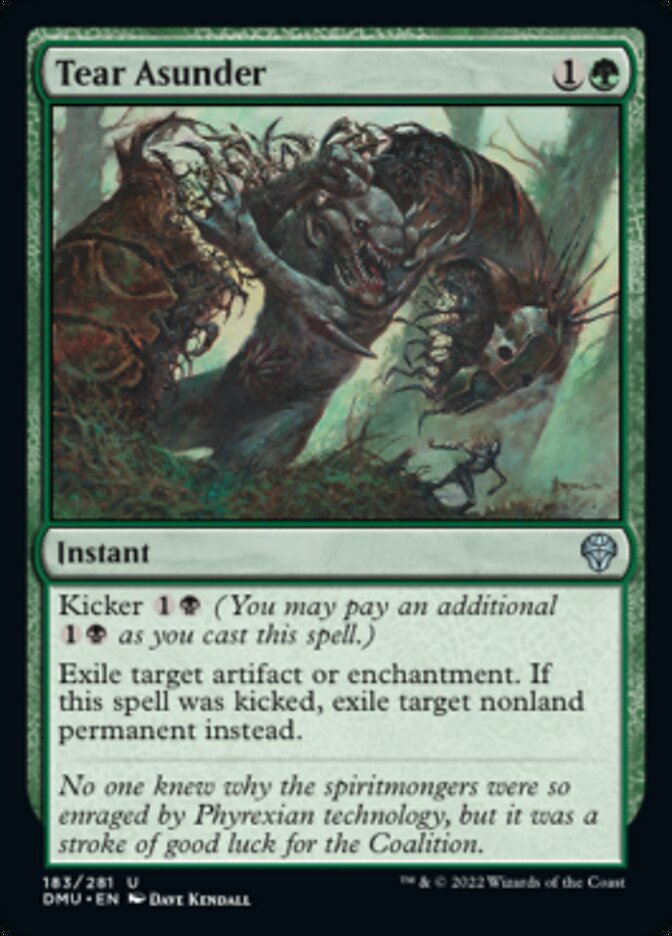
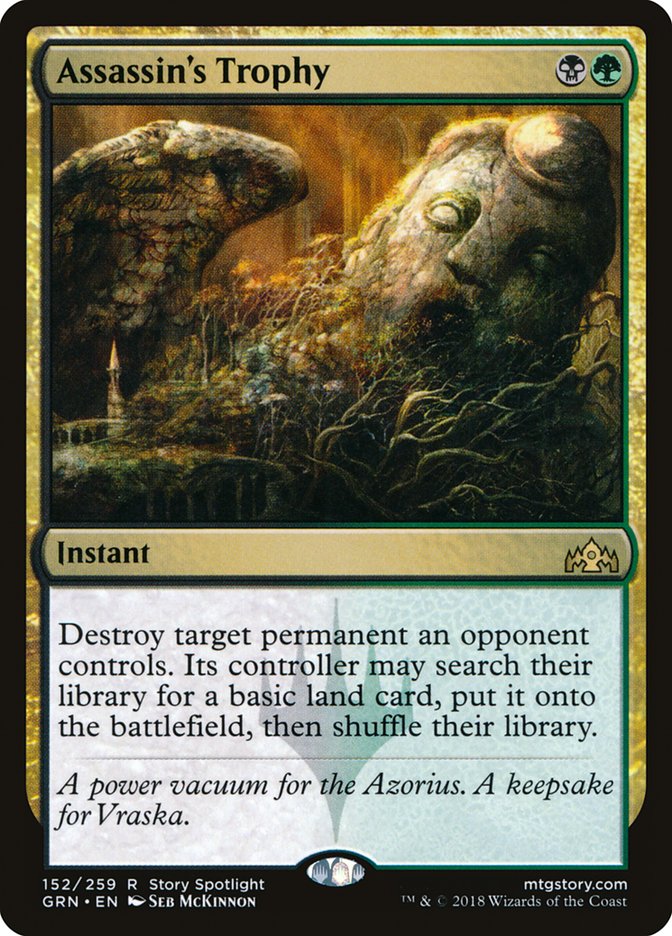
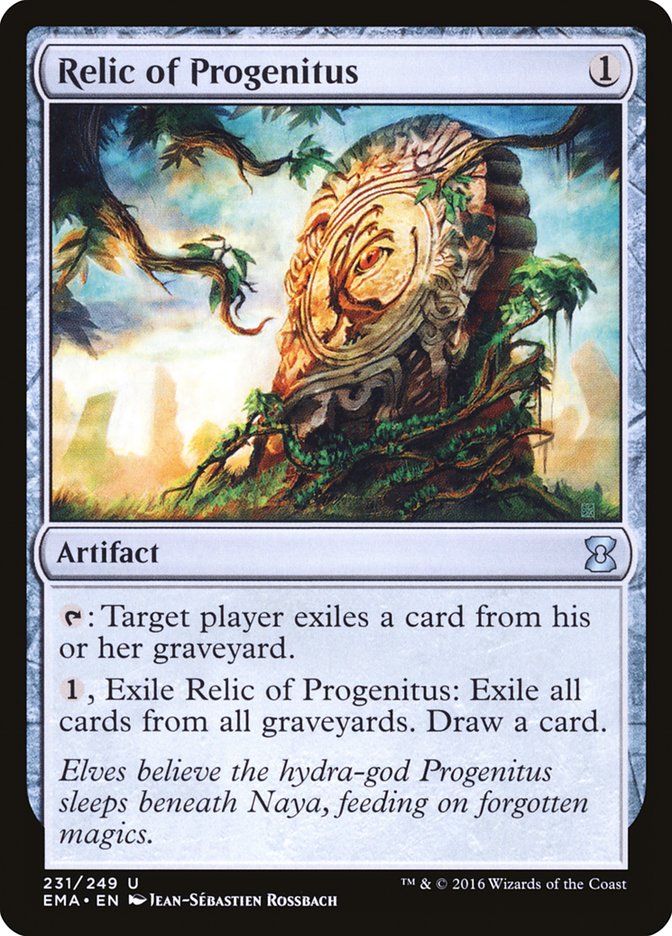
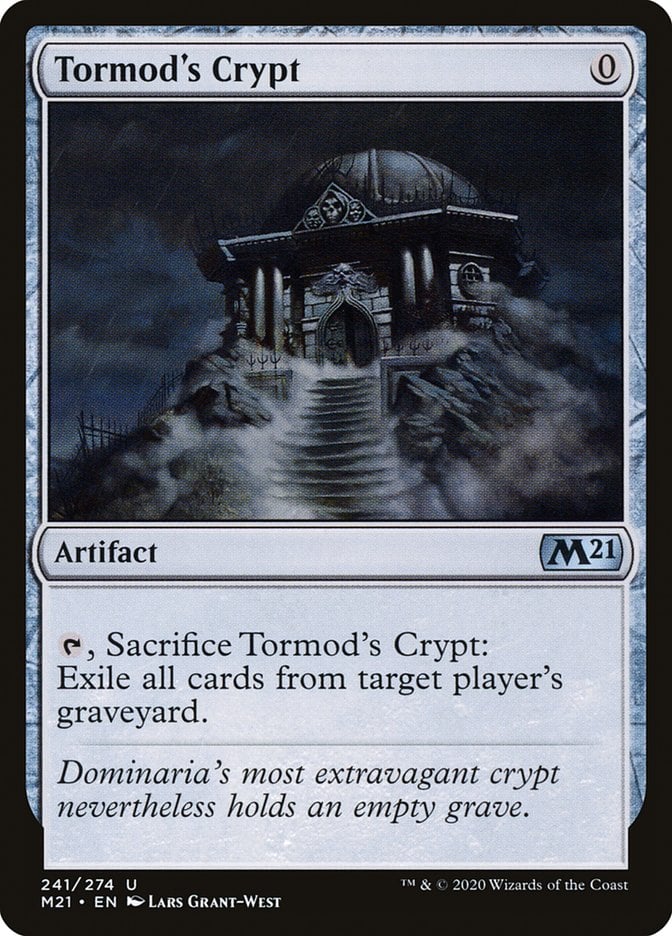
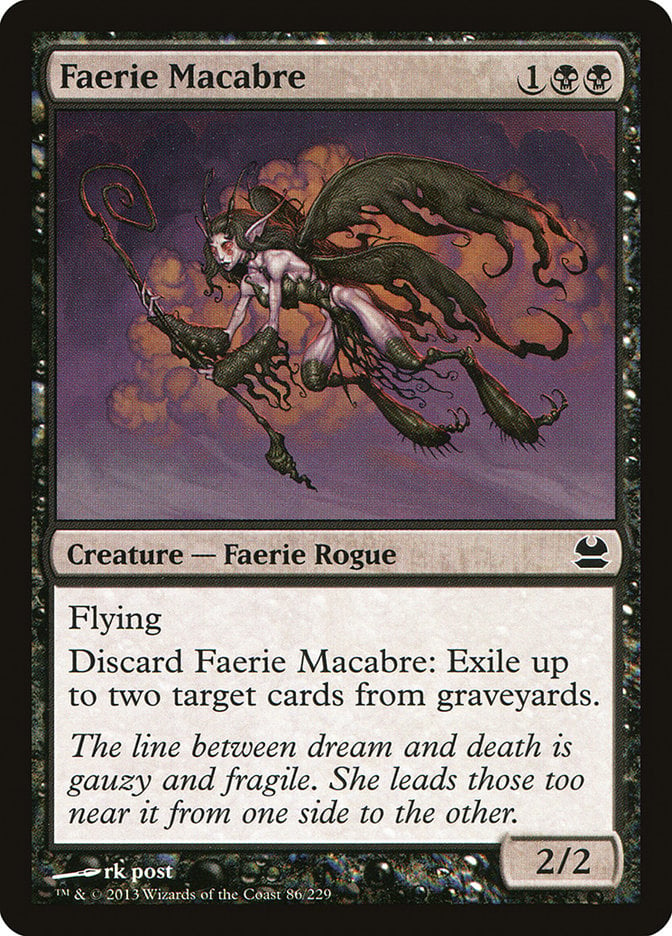
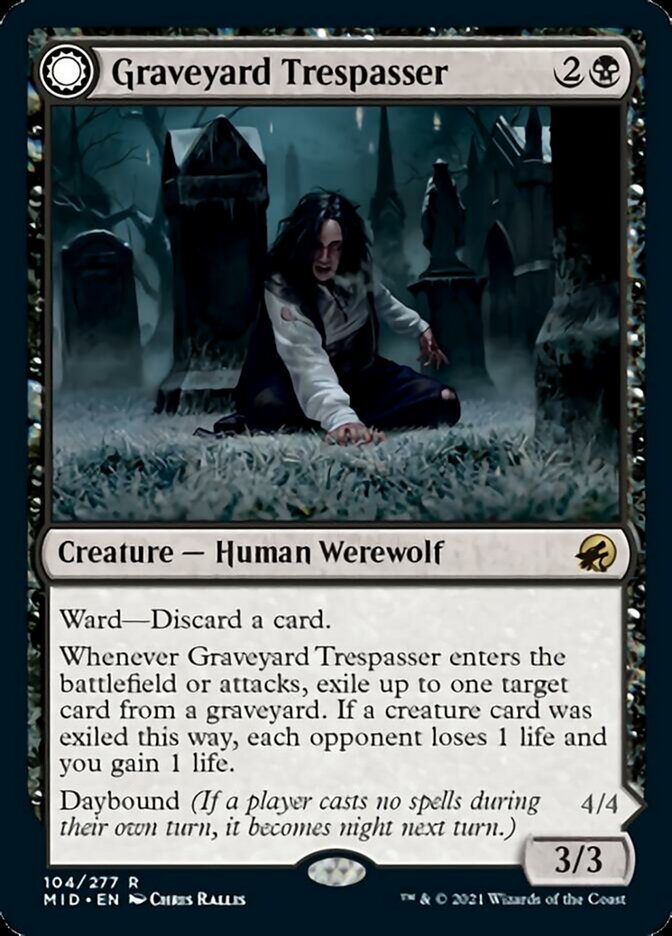


Add Comment